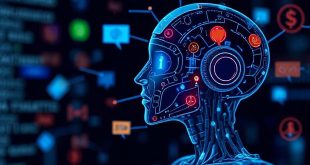Understanding the Evolving Cyberattack Landscape
As organizations accelerate digital transformation, cybercriminals are deploying increasingly sophisticated attack vectors. Recent data from Cybersecurity Ventures predicts global cybercrime damages will reach $10.5 trillion annually by 2025, making cybersecurity literacy essential for professionals across all sectors.
Primary Cyberattack Categories
1. Malware: The Persistent Threat
- Definition: Malicious software designed to infiltrate systems
- Evolution: From simple viruses to polymorphic code that evades detection
- Recent Example: The 2024 “Black Basta” ransomware attacks targeting healthcare providers
Subtypes:
- Ransomware: Encrypts data for extortion (up 87% YoY)
- Spyware: Stealth data collection (average dwell time: 78 days)
- Trojans: Disguised as legitimate software
2. Phishing: The Human Firewall Test
- New Tactics: AI-generated deepfake voice phishing (vishing)
- Success Rate: 3.4% of targeted users still click malicious links
- Defense: MFA reduces effectiveness by 99%
Case Study: A 2023 campaign spoofed Microsoft Teams notifications to compromise 40,000+ enterprise accounts
3. DDoS: The Digital Siege
- Scale: Modern attacks exceed 5 Tbps (Cloudflare Q1 2024 data)
- Innovation: IoT botnets now account for 72% of attacks
- Mitigation: AI-powered traffic filtering blocks 99.9% of malicious packets
Emerging Threat Vectors
1. AI-Powered Attacks
- Automated Vulnerability Scanning: 100x faster than human hackers
- Context-Aware Social Engineering: Personalized phishing at scale
- Adversarial Machine Learning: Poisoning AI models
2. Supply Chain Compromises
- Recent Incident: 2024 XZ Utils backdoor attempt
- Impact: 60% of breaches originate from third parties
- Solution: Software Bill of Materials (SBOM) adoption
Defensive Strategies
Layered Protection Framework
- Perimeter Security:
- Next-gen firewalls
- Network segmentation
- Endpoint Protection:
- Behavioral analysis
- Memory protection
- User Education:
- Phishing simulations
- Security awareness training
Advanced Technologies
- Deception Technology: Fake assets to mislead attackers
- Zero Trust Architecture: Continuous verification
- Threat Intelligence Sharing: ISAC participation
Industry-Specific Vulnerabilities
| Sector | Top Threat | Unique Challenge |
|---|---|---|
| Healthcare | Ransomware | Legacy system prevalence |
| Finance | Credential Stuffing | Regulatory complexity |
| Manufacturing | Industrial IoT attacks | OT/IT convergence |
| Government | APTs | Geopolitical targeting |
The Future of Cyber Threats
2025 Projections:
- Quantum computing risks to encryption
- 5G-enabled attack surface expansion
- Bio-digital convergence threats
“Cyber defense is no longer just an IT problem—it’s a core business resilience requirement,” states MITRE’s Chief Cybersecurity Scientist.
 Digital Tech Byte Latest Technology News
Digital Tech Byte Latest Technology News



